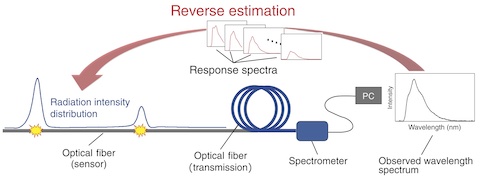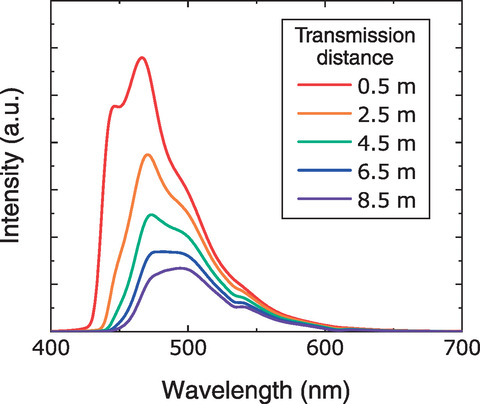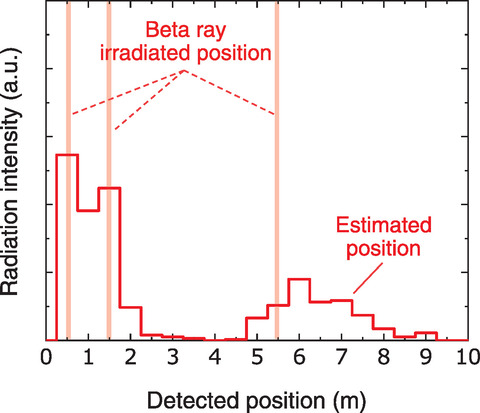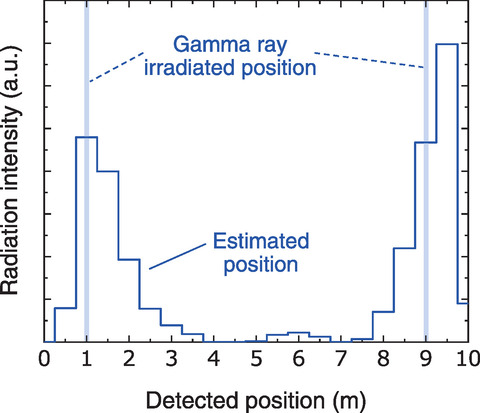
Fig.1-22 Schematic of the proposed method

Fig.1-23 Light attenuation inside the optical fiber

Fig.1-24 Position detection of the beta ray using a 90Sr/90Y source

Fig.1-25 Position detection of the gamma ray using a 60Co source
The distribution of radioactive substances at TEPCO's Fukushima Daiichi NPS (1F) decommissioning site must be measured to reduce the external dose of workers and to ensure efficient decontamination. Fiber-optic radiation sensors can be used to measure the distribution of radioactive substances. Among methods employing these sensors, the time-of-flight method, which determines the incident position of radiation to the fiber from the time difference of the light reaching both ends of the fiber, has been applied in the 1F decommissioning site. However, because the time-of-flight method must detect light at both ends of the fiber, it cannot easily be applied in high dose-rate environments, such as inside the 1F reactor building due, to the increase in separation error of the signal position.
Therefore, in collaboration with Nagoya University, we developed a method to measure the radiation intensity distribution along the fiber under a high dose-rate environment that requires light readouts from only one side of the optical fiber; a schematic of the developed method is shown in Fig.1-22. In this method, the light emitted from the interaction between the fiber and the radiation is detected by a spectrometer placed at one side of the fiber. The spectrometer captures the wavelength spectrum, which shows the relative intensity of each color of light. The emitted light is gradually attenuated inside the fiber due to the absorbance and scattering of light. The degree of attenuation depends on the color of the light; thus, the captured wavelength spectrum varies with the light transmission distance, as shown in Fig.1-23. Therefore, the radiation intensity distribution along the fiber can be estimated by analyzing the wavelength spectrum from only one side of the fiber. Additionally, since the wavelength spectrum measured by the spectrometer is an integrated intensity of each color of light, the saturation of the signal under the high dose-rate environment can be avoided.
Example of position detection using a beta ray from 90Sr/90Y (source intensity: 1-MBq) and a gamma ray from 60Co (irradiated dose rate: 3 Gy/h) are shown in Figs.1-24 and 1-25, respectively. Both estimated positions show good agreement with the actual radiation incident position. Therefore, the proposed method can effectively detect the position of gamma and beta rays at the 1F decommissioning site.
This work was partially supported by JAEA Nuclear Energy S&T and Human Resource Development Project “Measurement Methods for the Radioactive Source Distribution Inside Reactor Buildings using a One-dimensional Optical Fiber Radiation Sensor” (No.JPJA19B19206529).
(Yuta Terasaka)